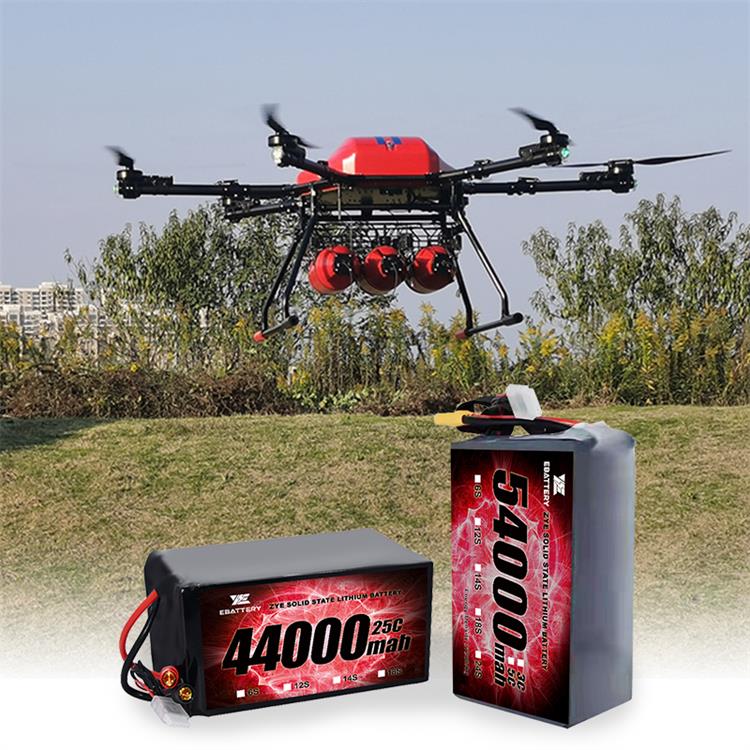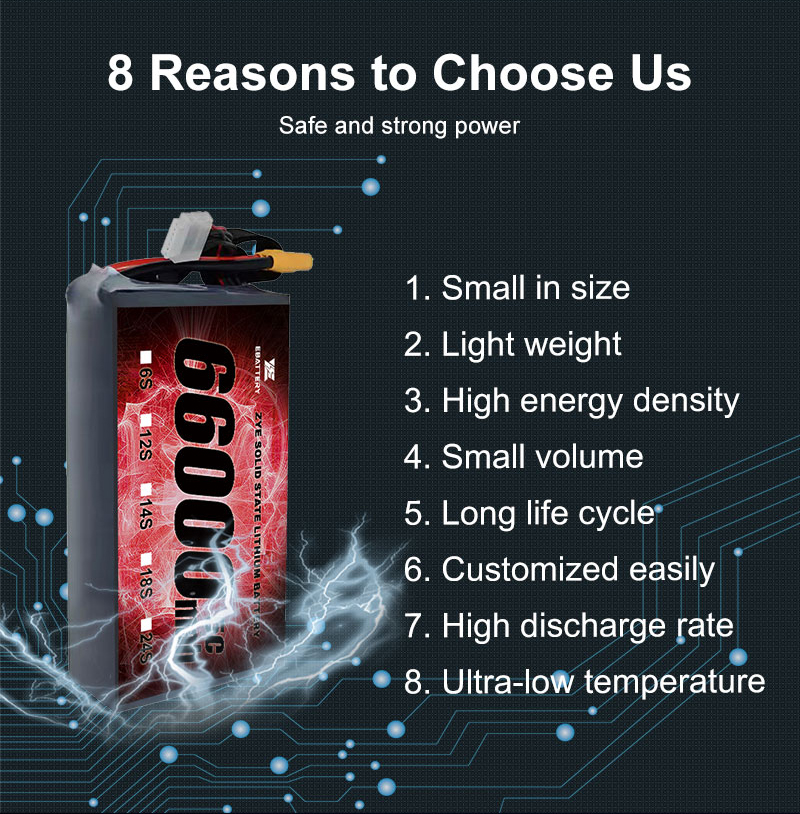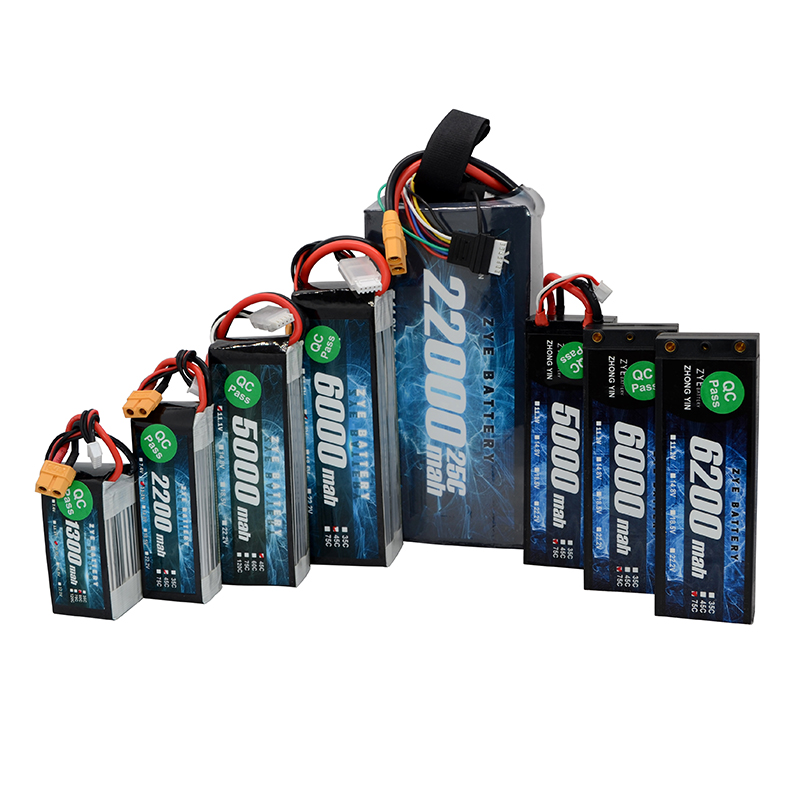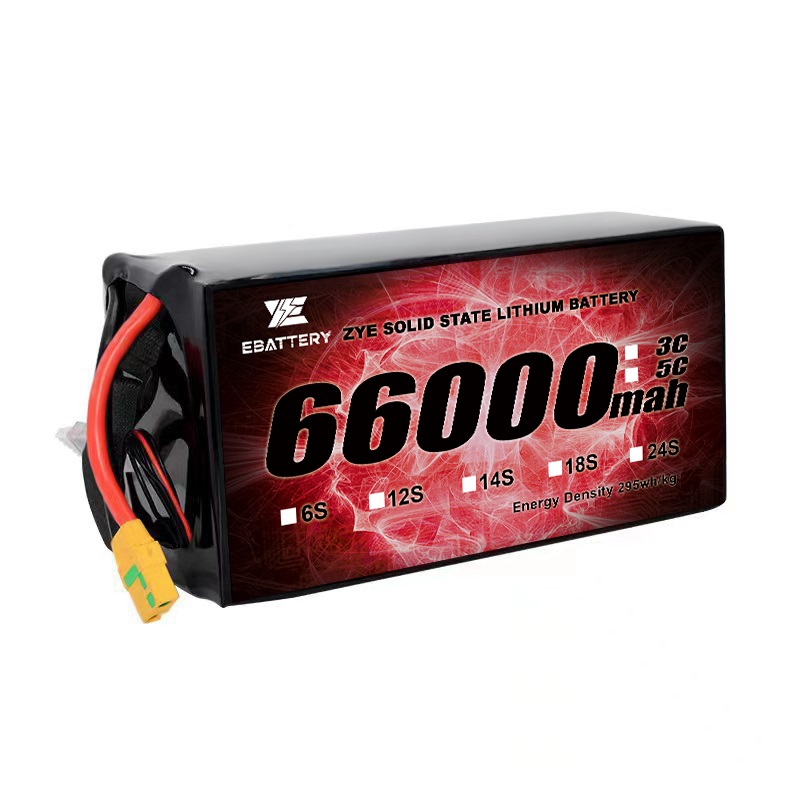What are the applications of solid state batteries for drones?
2025-07-19
The Sky’s the Limit: How Solid-State Batteries Are Revolutionizing Drone Applications
The drone industry has come a long way since its inception, evolving from niche hobbyist tools to indispensable assets across industries like agriculture, logistics, and public safety. However, one persistent challenge has limited their full potential: battery technology.
Traditional lithium-ion batteries, while widely used, suffer from drawbacks like short flight times, safety risks, and limited performance in extreme conditions. Enter solid-state-batteries—a game-changing innovation poised to redefine what drones can achieve. Let’s explore how this technology is unlocking new frontiers for unmanned aerial vehicles (UAVs).

1. Extended Flight Time and Higher Payload Capacity
The most immediate benefit of solid-state batteries for drones is their higher energy density. Unlike lithium-ion batteries, which rely on liquid electrolytes, solid-state designs use solid materials (e.g., ceramic or polymer composites), allowing more energy to be stored in the same volume or weight.
For example, light-weight-solid-state-batteries can achieve energy densities of 250–350 Wh/kg—30–50% higher than conventional lithium-ion cells .
This translates to 20–35% longer flight durations for drones, enabling them to cover larger areas in a single mission.
In agriculture, this means drones can conduct crop monitoring over vast fields without frequent landings for recharging. Similarly, delivery drones could extend their range from 20–30 km to 50–70 km, making long-distance logistics feasible .
Companies like ZYEpower and CEbattery already offer solid-state batteries tailored for drones, with models like the 45Ah 3.2V cell supporting payloads up to 100 kg and flight times exceeding 90 minutes .
2. Enhanced Safety and Reliability
Safety is a critical concern for drone operations, especially in crowded urban environments or remote areas. Solid-state batteries eliminate the flammable liquid electrolytes found in lithium-ion batteries, drastically reducing the risk of fires or explosions.
Tests show that solid-state cells can withstand punctures, overcharging, and extreme temperatures without catastrophic failure . For instance, Zyebattery's solid-state batteries passed nail penetration and thermal runaway tests, maintaining functionality even when damaged .
This safety advantage is particularly valuable for public safety drones, such as those used in firefighting or search-and-rescue missions. Firefighting drones equipped with solid-state batteries can operate near heat sources without risking electrolyte leakage, while police drones benefit from built-in safety mechanisms that prevent overheating during prolonged surveillance.

3. Fast Charging and Cold Weather Performance
solid-state-batteries also address two other pain points for drone operators: charging speed and temperature sensitivity. Traditional lithium-ion batteries degrade rapidly in subzero conditions, but solid-state designs perform reliably from -20°C to 55°C . A study published in PubMed highlighted a sodium-metal solid-state battery that operated efficiently at -20°C for over 2,000 hours, making it ideal for drones deployed in harsh climates .
Moreover, solid-state batteries support fast charging—some models can recharge from 0–80% in under 15 minutes . This is transformative for industries like logistics, where downtime between deliveries is minimized.
4. Versatile Applications Across Industries
The unique advantages of solid-state batteries are driving innovation in diverse sectors:
Agriculture and Environmental Monitoring
Farmers use drones with solid-state batteries to monitor crop health, irrigation needs, and pest infestations over large areas. The extended flight time allows for more comprehensive data collection, helping optimize yields and reduce chemical usage. Similarly, environmental organizations deploy drones to track wildlife, monitor deforestation, or assess disaster zones without worrying about battery limitations .
Logistics and Delivery
E-commerce giants like Amazon and Zipline are investing in delivery drones powered by solid-state batteries. These batteries enable longer flight ranges and heavier payloads, making them suitable for transporting medical supplies to remote regions or delivering packages in urban centers. For example, Zyebattery’s soft-pack solid-state batteries support payloads from 5 kg to 100 kg, with flight times exceeding 60 minutes .
Public Safety and Defense
Police and military drones rely on solid-state batteries for their reliability and safety. Law enforcement agencies use them for surveillance, crowd control, and crime scene mapping, while military applications include reconnaissance and tactical supply delivery.
Industrial Inspections
Infrastructure inspections of power lines, wind turbines, and bridges require drones to operate in challenging environments. Solid-state batteries’ resistance to extreme temperatures and vibrations ensures consistent performance, while their lightweight design allows drones to navigate tight spaces more effectively .
5. Overcoming Challenges: The Path to Mainstream Adoption
While solid-state batteries offer compelling advantages, their widespread adoption in drones is not without hurdles. Key challenges include:
Cost: Solid-state batteries are currently more expensive to produce than lithium-ion cells, though economies of scale and technological advancements are expected to drive costs down .
Manufacturing Complexity: Scaling production of solid-state batteries requires specialized equipment and processes.
Interfacial Stability: Ensuring seamless integration between solid electrolytes and electrodes remains a technical challenge.

The Future of Drone Technology
As solid-state-batteries technology matures, drones will become even more versatile and efficient. Imagine a world where drones can:
Operate Continuously: Solar-powered drones with solid-state batteries could stay airborne for days, providing real-time monitoring of weather patterns or wildlife migration.
Fly in Extreme Conditions: From arctic surveillance to desert firefighting, drones would no longer be limited by temperature fluctuations.
Enable Autonomous Fleets: Longer flight times and reliable charging would support fully autonomous drone swarms for tasks like disaster response or large-scale infrastructure projects.

Conclusion
Solid-state batteries are not just an incremental improvement—they’re a paradigm shift for drone technology. By addressing the limitations of lithium-ion batteries, they unlock new possibilities for endurance, safety, and performance.
We’re on the cusp of a drone revolution where the sky truly is the limit. Whether it’s feeding the world, saving lives, or building smarter cities, solid-state batteries are powering the future of flight.
For more information about high energy density solid state battery and our range of high-performance energy storage solutions, please don't hesitate to contact us at coco@zyepower.com. Our team of experts is ready to help you find the perfect battery solution for your needs.
























































